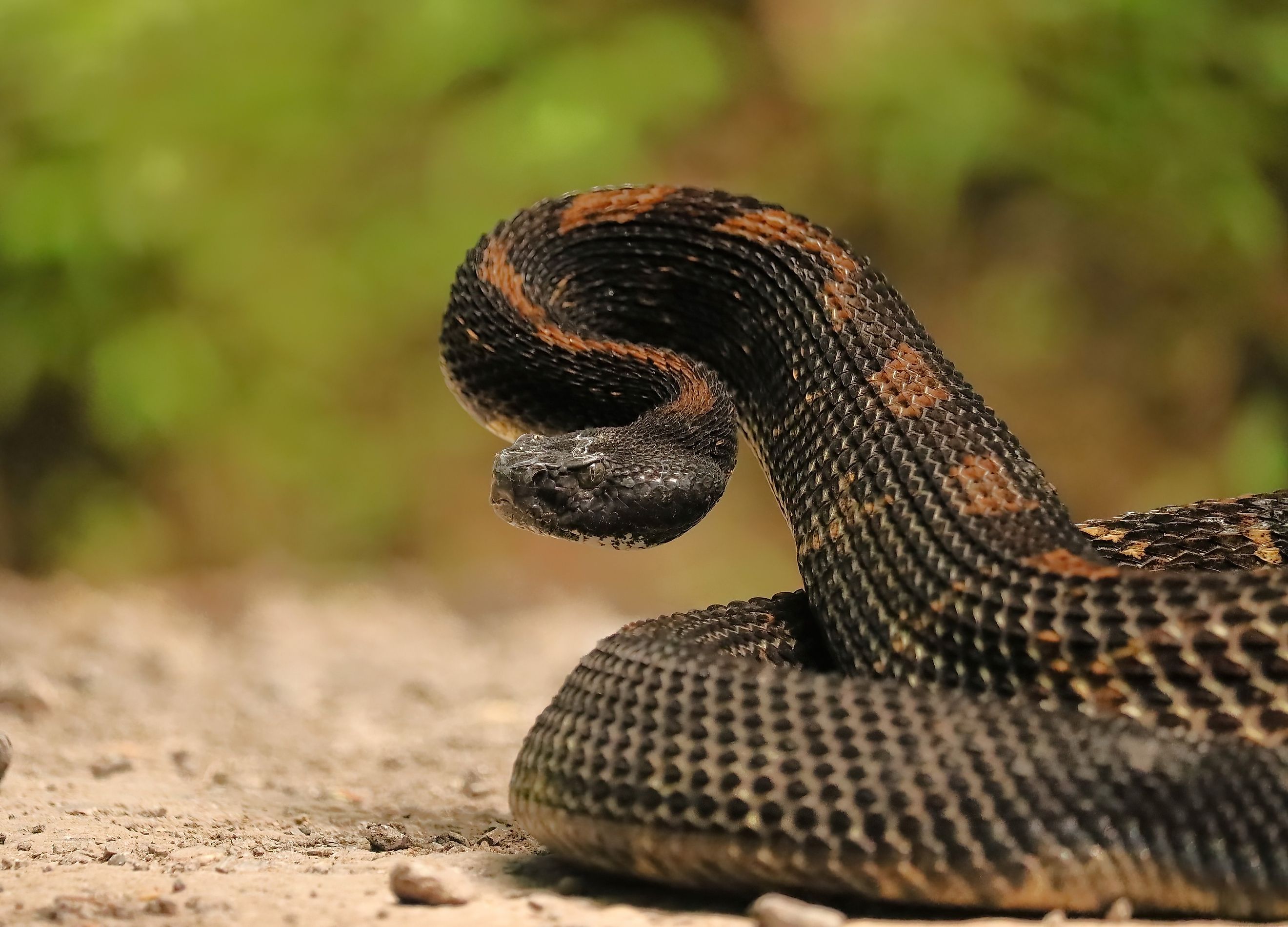
Which State Has More Venomous Snakes: Florida or Arkansas?
Florida and Arkansas are both southern states with supremely snakey habitats. Everywhere from Arkansas' Ozarks to Florida's Everglades to Arkansas' Grand Prairie to Florida's Big Cypress provide food, shelter, and space for dozens of snake species, a small portion of which are venomous. These slithering predators play a critical role in the ecosystems they inhabit, managing rodent populations and even helping control invasive species. Their venom, while dangerous, is primarily used for hunting rather than defense. Which state has more venomous snakes? Keep reading to find out.
Note: some Florida and Arkansas snakes, like the hognose snake, produce a tiny amount of venom for subduing prey, but it is mild enough not to "count." All of the following species have venom that counts, meaning it is dangerous to humans.
Venomous Snakes of Florida
Florida Cottonmouth
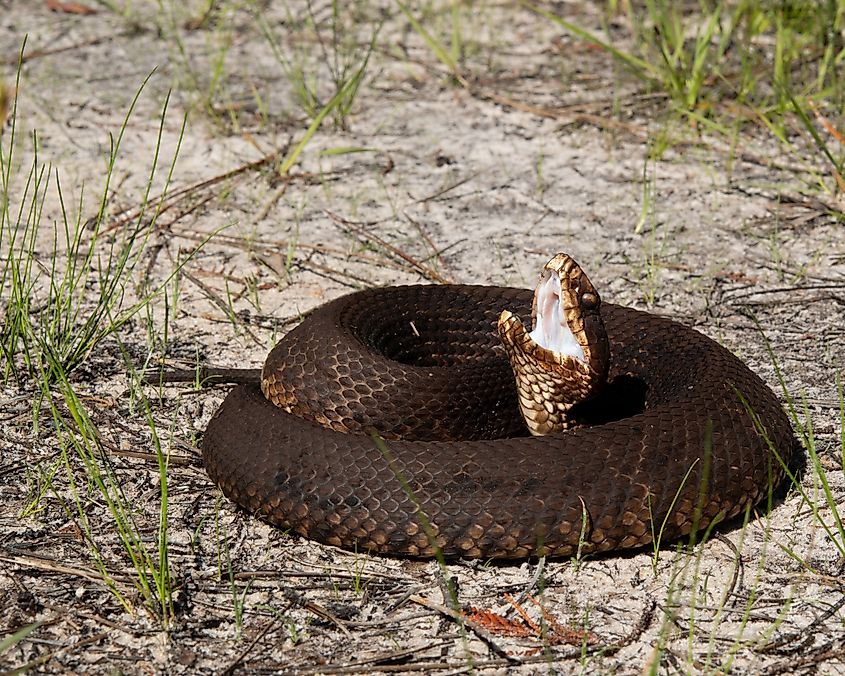
The Florida cottonmouth (Agkistrodon conanti) lives in southern Georgia and throughout Florida. Although it largely stays apart from the Northern cottonmouth (Agkistrodon piscivorus), they overlap in the North Florida-Georgia region and have created hybrids that are distinct but not enough to be declared new species... yet. The Florida Cottonmouth is a stout, semi-aquatic pit viper named for the cottonlike oral tissue it displays as a warning. This "cotton" is not actually dangerous, but the venom glands inside the tissue can cause extreme pain, necrosis, and, though documented fatalities are scant, death. In terms of size, this snake can reach lengths of over six feet, making it one of the largest species on this list.
Eastern Coral Snake
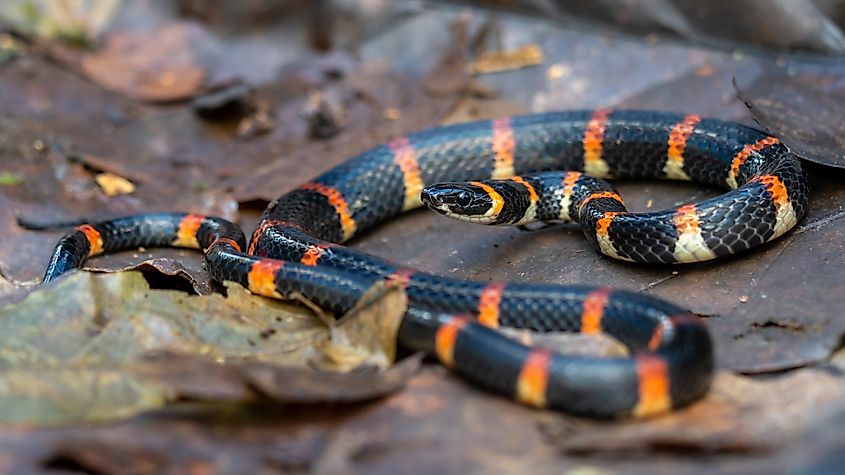
As Florida's only member of the Elapidae family, the Eastern coral snake (Micrurus fulvius) is a cousin to cobras and mambas. But don't let that scare you. This elapid is bright, shy, and has such small fangs that envenomations—and fatalities—are very rare. In fact, the only documented human death from an American coral snake since 1967 was reportedly an undocumented South Florida homeless immigrant who was drunk and did not seek treatment. Moreover, he was bitten while attacking the snake with a broken beer bottle. These snakes are also easy to spot in the wild, with a vibrant set of red, black, and yellow rings across their body.
Eastern Diamondback Rattlesnake
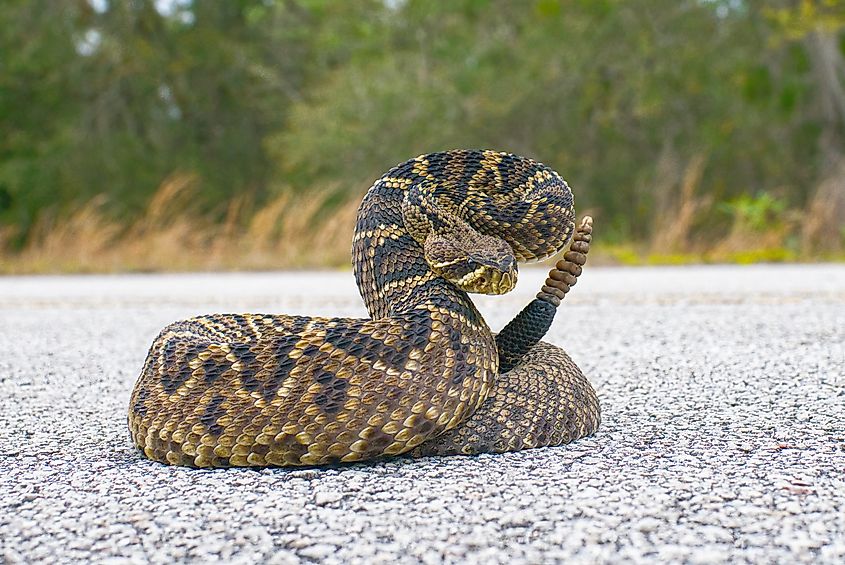
Dwarfing even the timber rattlesnake is the Eastern diamondback rattlesnake (Crotalus adamanteus), which is considered the largest and most dangerous venomous snake in America. It has a maximum body length of eight feet, a fang length of over an inch, and a venom yield of 1,000 milligrams. Combine those facts with the fact that it inhabits every Florida county, which makes the Eastern diamondback responsible for most fatal Florida fang pricks. One of the more recent cases is a Putnam County fire marshal who attacked the rattler first. Whether in Florida or Arkansas, or anywhere else in the world, snakebites are overwhelmingly defensive.
Pygmy Rattlesnake (Dusky)
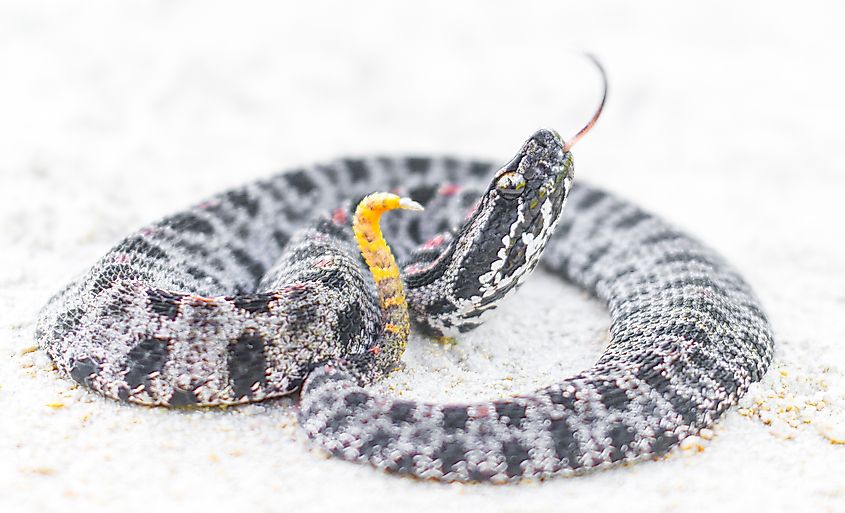
Another toxic but tiny Florida serpent, the pygmy rattlesnake (Sistrurus miliarius) does not typically exceed 24 inches in length or inject more than 24 milligrams of venom. Compare that to other rattler species that span several feet and inject hundreds of milligrams in a single bite. Listen for the pygmy's rattle (which is so small it sounds like a buzzing insect) while hiking through Florida. Though unlikely to be lethal, its bite is still a medical emergency due to its cytotoxic and hemorrhagic characteristics. To this end, symptoms like blood loss, pain, and swelling are the most common.
Venomous Snakes of Arkansas
Northern Cottonmouth
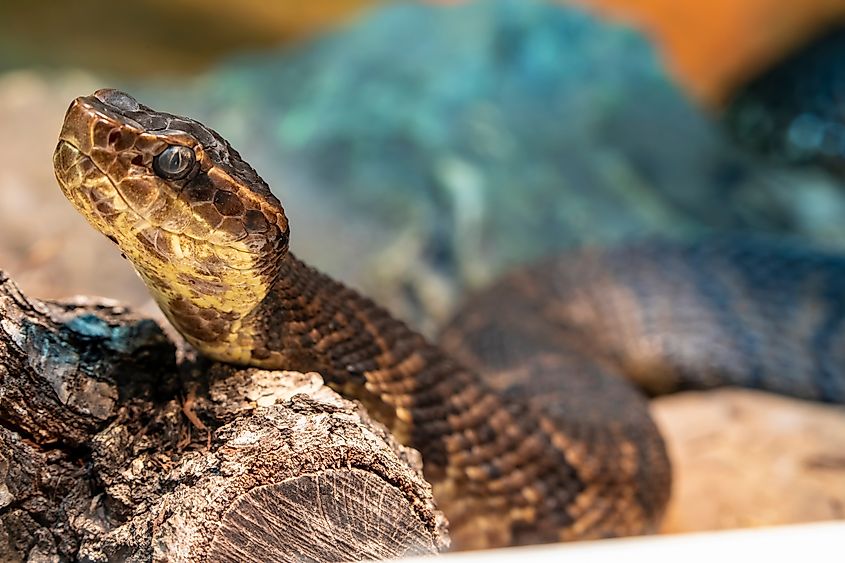
The Northern cottonmouth (Agkistrodon piscivorus) inhabits Arkansas wetlands and behaves similarly to its incestuous Florida cousin. It too gapes its cottonlike mouth as a defense mechanism and has relatively potent venom. The snake has a dark coloration with lighter brown bands and can reach lengths of up to 74 inches, although average specimens tend to be around 40 inches. No cottonmouth-caused deaths have been recorded in modern Arkansas, but a few have occurred in other states. These include a man who got bitten while wading in a Missouri river and was discovered by a coroner to have other toxins that contributed to his death, namely ethanol and oxycodone.
Texas Coral Snake
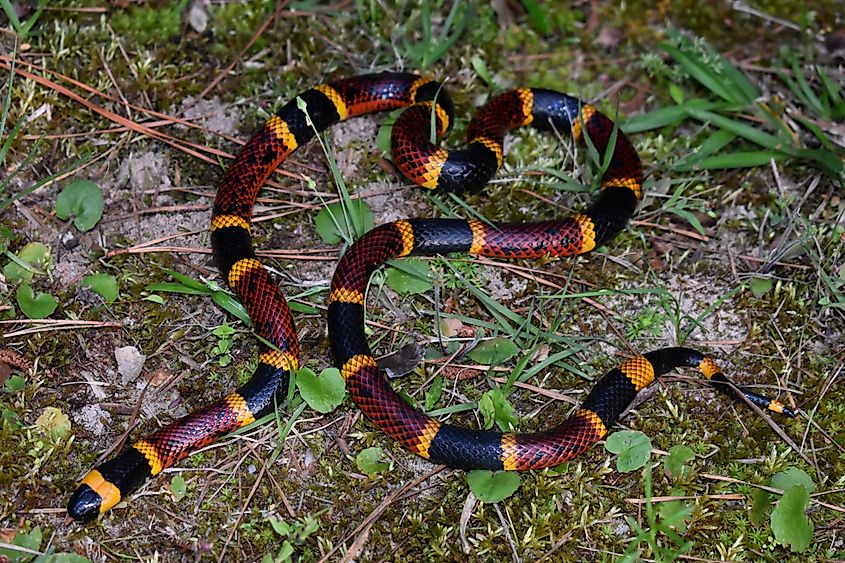
Arkansas' only elapid is the Texas coral snake (Micrurus tener), which is so similar to the Eastern coral snake that it was once considered a subspecies. Now classified as its own species, the Texas coral snake is a docile but highly neurotoxic (nervous system-targeting) reptile that has caused zero documented deaths in America since coral snake antivenin debuted in 1967. Arkansans can find this colorful creature under logs and leaf litter—or above the surface after a rainstorm—in the southwestern part of the state. Look, but don't touch. With its slender body and vivid red, black, and yellow rings, the Texas coral snake typically reaches lengths of 20-30 inches, making it easily recognizable despite its small size.
Western Diamondback Rattlesnake
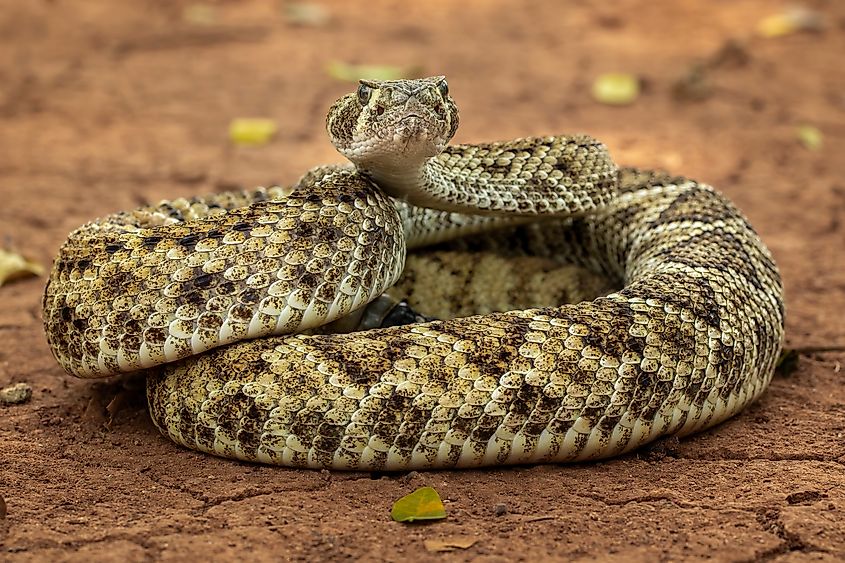
While Florida has the Eastern diamondback rattlesnake, Arkansas has the Western diamondback rattlesnake (Crotalus atrox). Aside from its Eastern cousin, the Western diamondback is America's largest venomous snake. It captures prey as big as rabbits with its proportionately huge fangs. Given its size, potency, and venom yield, the Western diamondback is deadlier than the other Arkansas rattlers but has a much smaller range. It occupies only the west-central part of the state and thus accounts for very few bites. Reaching lengths of up to 7 feet, its thick, diamond-patterned body and large triangular head make it an imposing sight in the wild.
Pygmy Rattlesnake (Western)
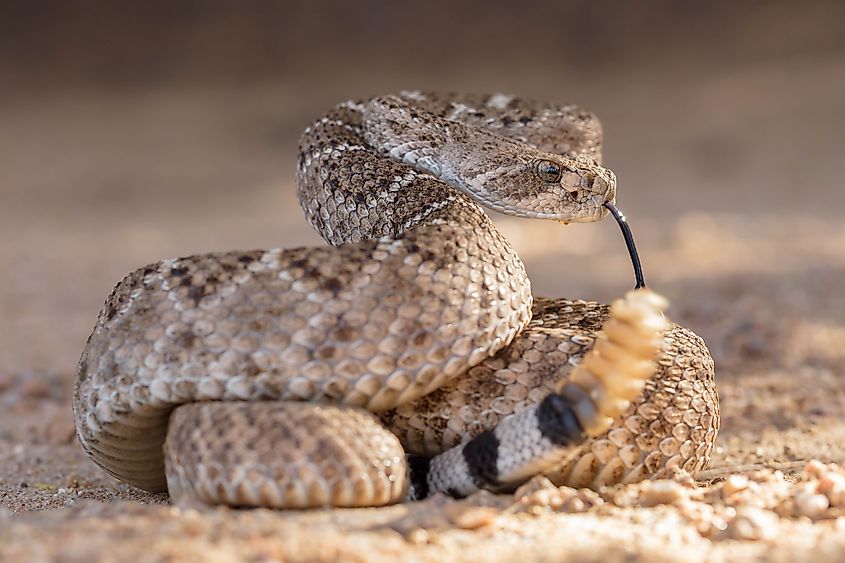
Although one species of pygmy rattlesnake (Sistrurus miliarius) inhabits both Florida and Arkansas, it has separate subspecies. Florida claims the dusky pygmy rattlesnake (Sistrurus miliarius barbouri), while Arkansas harbors the Western pygmy rattlesnake (Sistrurus miliarius streckeri). Though nearly identical in size and toxicity, the Western pygmy tends to have fewer spots and brighter colors than the dusky pygmy. It is found across Arkansas in forests and shrubland. Again, listen for its faint rattle to avoid envenomation. These snakes are rarely fatal, but bites can still cause significant pain, swelling, and other symptoms.
Venomous Snakes in Both States
Timber Rattlesnake
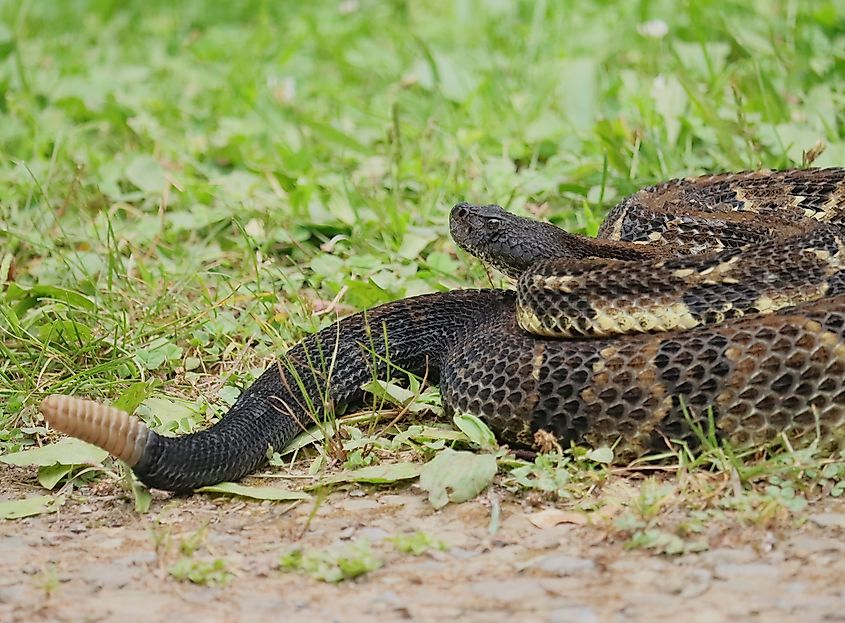
Dwarfing the pygmy rattlesnake is the timber rattlesnake (Crotalus horridus), which can grow up to five feet in length. The snake boasts a yellowish-brown coloration covered by dark brown to black crossbands across its body. As its name suggests, the timber rattler occupies forested areas of North Florida, where it preys on rodents and birds with a large quantity of myotoxic (flesh-destroying) venom. In humans, a bite can lead to decay in flesh, swelling, and muscle stiffness. Human fatalities from the Florida timber have been recorded, including a four-year-old Nassau County boy in 2014, but they are quite rare. In Arkansas, though fatal rattlesnake bites have been recorded, they are from 50-plus years ago, and specific species have not been identified.
Copperhead
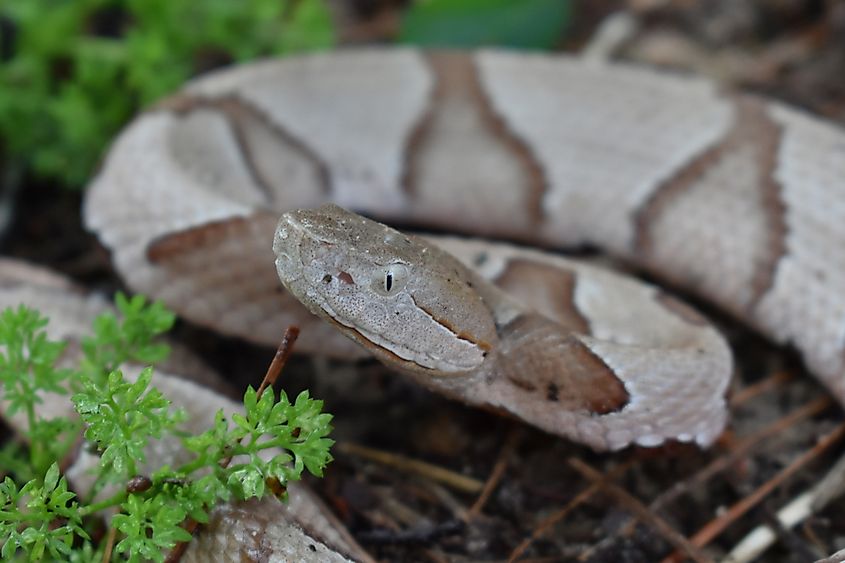
The copperhead (Agkistrodon contortrix) is a far less toxic pit viper than the cottonmouth but causes far more bites across the nation. In Florida, however, the copperhead occupies only a few counties in the Panhandle, so it is arguably the state's least worrisome venomous snake. Still, while walking in the woodlands of North Florida, watch your step. The copperhead makes little noise and has excellent camouflage. Averaging between 20 and 37 inches, many smaller juveniles can easily go unnoticed in thick forests or around rugged trails. A bite is not usually lethal but can be destructive in other ways. Pain and swelling are common symptoms.
Unlike in Florida, where it is confined to the north, the copperhead lives throughout Arkansas and causes a high percentage of snakebites. However, due to the weakness of its venom, copperhead-caused fatalities are nonexistent in Arkansas. They have happened elsewhere, but those are outliers since the survival rate of a copperhead bite exceeds 99.99 percent.
Results
Florida and Arkansas are tied with six venomous snake species a piece. Though all are toxic to humans, they are harmless if you watch your step and refrain from trying to hold or harm them. Virtually every snakebite is defensive, whether it is from a Florida cottonmouth, Northern cottonmouth, copperhead, Eastern coral snake, Texas coral snake, pygmy rattlesnake, timber rattlesnake, Eastern diamondback rattlesnake, and Western diamondback rattlesnake. Like anywhere, Florida and Arkansas snakes just want to be left alone.











